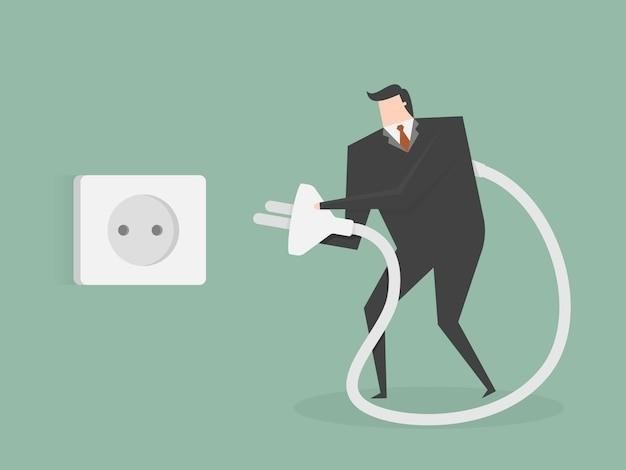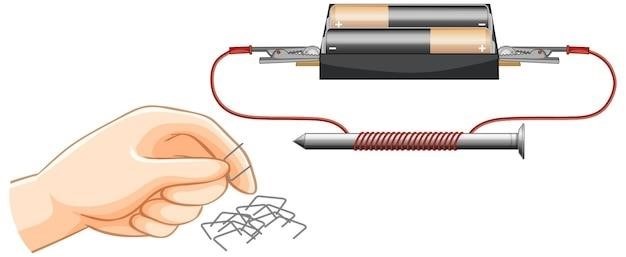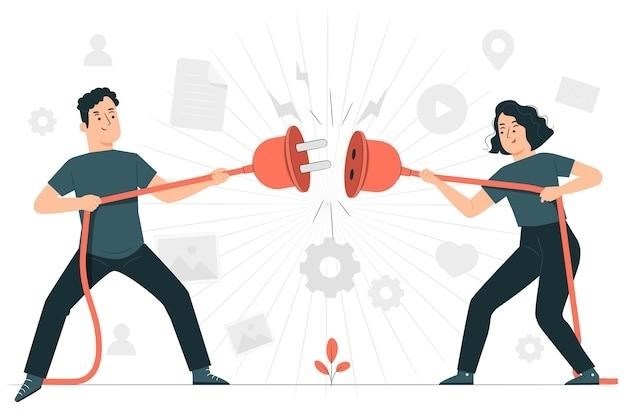Manual vs. Electric Choke⁚ A Comprehensive Comparison
The choice between a manual and an electric choke for your carburetor can be a perplexing one. Both systems have their own set of advantages and disadvantages, making it essential to understand the nuances of each before making a decision. This comprehensive comparison will explore the workings, benefits, and drawbacks of manual and electric chokes, empowering you to make an informed choice for your specific needs.
Introduction
In the realm of classic car enthusiasts and those who appreciate the intricacies of internal combustion engines, the debate between manual and electric chokes often surfaces. Both systems are designed to enrich the fuel-air mixture during cold starts, ensuring smooth ignition and preventing stalling. However, their distinct mechanisms and characteristics lead to varying levels of user experience, performance, and overall convenience.
This article delves into the world of chokes, providing a comprehensive comparison of manual and electric systems. We will explore their respective workings, advantages, disadvantages, and ultimately guide you towards choosing the right option for your vehicle and driving needs. Whether you’re a seasoned mechanic or a curious car owner, understanding the differences between manual and electric chokes will empower you to make informed decisions about your engine’s performance and overall efficiency.
Prepare to unravel the secrets of these crucial components as we delve into the fascinating world of manual and electric chokes, shedding light on their respective roles in ensuring a smooth and reliable cold start for your beloved classic car.
What is a Choke?
A choke, in the context of a gasoline engine, is a device that enriches the fuel-air mixture during cold starts. It’s essentially an air restriction device located within the carburetor. By limiting the amount of air entering the carburetor, the choke creates a richer mixture, which is crucial for easier ignition in cold conditions.
Imagine starting your car on a frosty morning. The cold air is dense, making it difficult for the fuel to vaporize and mix properly with the air for combustion. This leads to a lean mixture, often resulting in a rough start or even stalling. The choke comes to the rescue by temporarily increasing the fuel-to-air ratio, creating a richer mixture that is easier to ignite.

As the engine warms up, the choke gradually opens, allowing more air to enter, ultimately returning the fuel-air mixture to its normal, optimal ratio. This process ensures smooth operation and efficient combustion once the engine reaches its operating temperature.
How Manual Chokes Work
Manual chokes operate through a simple mechanical system that allows the driver to directly control the amount of air entering the carburetor. This control is usually achieved using a lever or knob connected to a cable that runs from the dashboard to the carburetor.
When you pull the choke lever, it activates a butterfly valve inside the carburetor. This valve partially blocks the airflow, creating a richer fuel-air mixture. As the engine warms up, you gradually push the choke lever back in, reducing the restriction on airflow and returning the fuel-air mixture to its normal state.
The effectiveness of a manual choke relies heavily on the driver’s ability to judge the engine’s temperature and adjust the choke accordingly. If you pull the choke too far or leave it engaged for too long, you can create a overly rich mixture, leading to poor fuel economy and potentially even engine damage. Conversely, if you don’t engage the choke enough, the engine might struggle to start or run smoothly in cold conditions.
While manual chokes offer direct control, they require a bit of knowledge and experience for optimal operation.
How Electric Chokes Work
Electric chokes are a more automated approach to controlling the air-fuel mixture during cold starts. These systems rely on an electrically heated bimetallic spring that responds to changes in temperature.
When the engine is cold, the bimetallic spring is contracted, blocking the airflow and creating a rich fuel-air mixture. As the engine warms up, the bimetallic spring gradually expands, allowing more air to enter the carburetor and returning the fuel-air mixture to its normal state.
The process is controlled by a thermostat that is connected to the engine’s cooling system. The thermostat monitors the engine’s temperature and sends a signal to the electric choke when it’s time to start opening up the airflow.
Electric chokes eliminate the need for manual adjustment, making them a more convenient option for drivers. They also tend to be more reliable than manual chokes, as they don’t rely on the driver’s judgment. However, electric chokes can sometimes malfunction, leading to issues with starting or running the engine.
Advantages of Manual Chokes
Manual chokes offer several advantages that appeal to car enthusiasts who value simplicity, control, and cost-effectiveness. Their primary strength lies in their direct and intuitive operation, allowing drivers to fine-tune the air-fuel mixture for optimal cold starting.
By manually adjusting the choke lever, drivers can precisely control the amount of air entering the carburetor, ensuring a rich mixture that promotes smooth cold starts. This ability to fine-tune the choke offers a level of control that electric chokes lack, allowing for precise adjustments based on ambient temperature and engine conditions.
Furthermore, manual chokes are generally less complex and expensive than their electric counterparts. They consist of fewer components, simplifying installation and reducing potential maintenance costs. Their simplicity also translates to a lower risk of malfunctions, ensuring reliable performance even in harsh conditions.
For drivers who enjoy hands-on tuning and appreciate the mechanical simplicity of manual systems, a manual choke can be a highly appealing choice.
Disadvantages of Manual Chokes
While manual chokes offer a degree of control and simplicity, they also come with certain drawbacks that may be undesirable for some drivers. One of the most significant disadvantages is the need for driver intervention during cold starts.
Unlike electric chokes, which automatically adjust based on engine temperature, manual chokes require the driver to manually operate the choke lever, potentially leading to a less convenient cold start experience.
Additionally, the manual choke lever can be prone to wear and tear, especially if frequently used or subjected to harsh conditions. This can result in a less responsive choke or even malfunctions, requiring repairs or adjustments.
Another drawback is the potential for incorrect choke adjustment, which can lead to poor fuel economy and engine performance. Drivers who are unfamiliar with proper choke operation may struggle to find the optimal settings, potentially resulting in a rich mixture that wastes fuel or a lean mixture that harms the engine.
For drivers who prioritize convenience, automation, and minimal maintenance, manual chokes may not be the ideal choice.
Advantages of Electric Chokes

Electric chokes offer several advantages over their manual counterparts, making them a popular choice among drivers seeking convenience and optimized engine performance. One of the key benefits is their automatic operation, eliminating the need for driver intervention during cold starts.
Electric chokes use a thermostat-controlled system that automatically adjusts the choke based on engine temperature, ensuring optimal fuel-air mixture for efficient starting and smooth warm-up. This automation simplifies the cold start process, allowing drivers to focus on other aspects of driving.
Another advantage is the consistent and reliable operation of electric chokes. Unlike manual chokes, which can be prone to wear and tear, electric chokes are less susceptible to mechanical issues, resulting in smoother and more consistent engine performance.
Furthermore, electric chokes often feature a vacuum pull-off system that reduces the choke effect under high vacuum conditions. This feature allows for more efficient operation at higher engine speeds, contributing to improved fuel economy and performance;
For drivers who value automation, reliability, and optimized engine performance, electric chokes offer a compelling set of benefits.
Disadvantages of Electric Chokes
While electric chokes offer numerous advantages, they also come with certain drawbacks that should be considered; One significant disadvantage is their potential for malfunction. Electric chokes rely on electrical components, which are susceptible to failure over time. This can result in starting issues, poor engine performance, or even complete failure of the choke system.
Another disadvantage is the cost; Electric chokes are generally more expensive than manual chokes due to the added electrical components and complexity of the system. This cost difference can be a significant factor for budget-conscious drivers.
Additionally, electric chokes can sometimes be prone to sticking or not opening fully, leading to a rich fuel mixture and poor engine performance. This issue can be caused by faulty wiring, a malfunctioning thermostat, or simply wear and tear on the system.
Moreover, electric chokes require a power source, which can be a challenge in older vehicles or custom builds where wiring access might be limited.
While electric chokes offer convenience and automation, these disadvantages should be carefully considered when making a choice between a manual and electric choke system.
Choosing the Right Choke for Your Needs
The decision of whether to opt for a manual or electric choke ultimately depends on your individual preferences, driving habits, and the specific requirements of your vehicle. If you prioritize simplicity, affordability, and direct control over the air-fuel mixture, a manual choke might be the better choice.
However, if you value convenience, automation, and minimal user intervention, an electric choke could be more appealing. Consider the climate you live in and your vehicle’s age and condition. If you live in a cold climate and your vehicle is older, an electric choke might provide a more reliable starting experience.
For modern vehicles and those with limited space for a manual choke cable, an electric choke could be a more practical option. However, if you are comfortable with the mechanics of a manual choke and are willing to learn how to adjust it, it can be a cost-effective and reliable solution.
Ultimately, the best choke system is the one that best suits your specific needs and driving style. Carefully weigh the advantages and disadvantages of each system before making your decision.
In the realm of classic car enthusiasts and those who appreciate the intricacies of engine mechanics, the debate between manual and electric chokes continues. While both systems offer distinct advantages, ultimately, the choice boils down to individual preferences and the specific needs of your vehicle.
Manual chokes provide a direct and hands-on approach, offering control over the air-fuel mixture and a sense of mechanical engagement. On the other hand, electric chokes prioritize convenience and automation, eliminating the need for manual adjustments.
Whether you favor the simplicity of a manual choke or the ease of an electric choke, understanding their respective benefits and limitations empowers you to make an informed decision. By carefully considering your driving habits, climate, and vehicle’s specific requirements, you can select the choke system that best complements your driving experience and ensures reliable starts.
